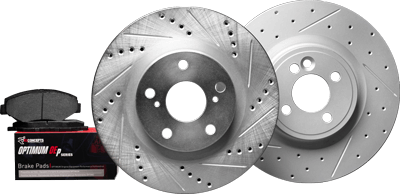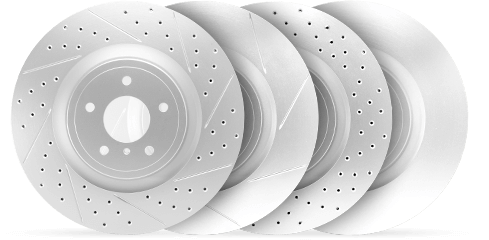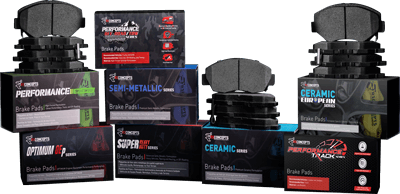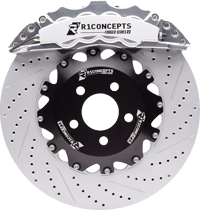If you’re asking ‘what brake pads do I need’ for your vehicle, the answer depends on your driving style, car type, and performance requirements. Whether you need the durability of semi-metallic pads, the quiet operation of ceramic, or the eco-friendly aspects of organic pads, this guide will provide you with the information to make an educated choice without the technical overwhelm.
Key Takeaways
Brake pad types (organic, ceramic, semi-metallic, and metallic) offer differing benefits in terms of noise level, performance, and lifespan, tailored to various driving styles and vehicle requirements.
Ceramic brake pads are premium options providing a quiet, clean, and durable solution, while semi-metallic and metallic pads serve drivers seeking robust stopping power for harsher driving conditions or heavier vehicles.
Proper selection, regular maintenance, and timely replacement of brake pads are essential for optimal performance and safety, with personal driving style and vehicle type dictating the ideal brake pad choice.
Finding the Right Brake Pads for Your Vehicle
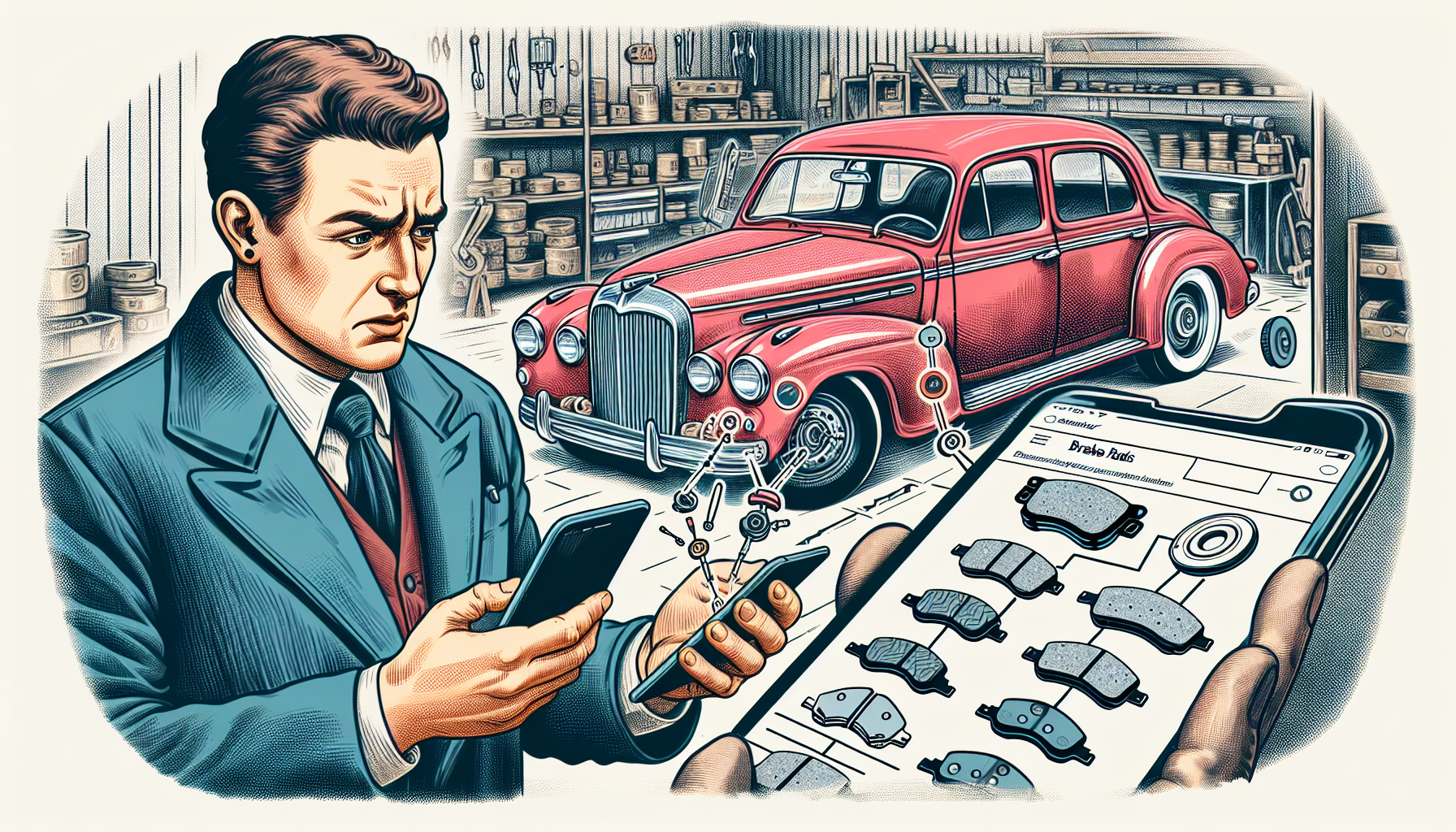
Not sure which is the best pad to use for your vehicle? We can help you with that! There are two things to consider when choosing the type of brake pads to use for your vehicle.
Stopping Power for Different Driving Styles
One of the things you should consider when choosing the right type of brake pad is your driving style.
Ceramic brake pads are well-suited for drivers who prefer smooth and quiet rides and lives in an even terrain. The pads provide just the right durability to fit with a gentle, daily driving style.
Cost Considerations
Considering the financial implications of brake pads is essential. Organic brake pads may appear financially attractive due to their lower upfront cost, but evaluating them should extend beyond initial savings to include their effectiveness, longevity, and potential impact on other components of the braking system in terms of wear.
On the other hand, ceramic pads come with a greater initial investment but justify this expense over time by offering an increased service life and quieter performance. This indicates that occasionally investing more at the beginning can result in better economic sense as time progresses.
Brake Pad Types and Their Benefits

There are four primary kinds of brake pads: organic, ceramic, metallic, and semi-metallic. Each holds the potential to be the perfect match for your vehicle. To uncover which is most suited for you, you need to understand their characteristics first.
Organic Brake Pads
Organic brake pads, despite their name, are not drastically different from standard semi-metallic ones in terms of basic function. What sets them apart is their revised formulation, which is designed to comply with the environmental laws of various countries and states within the US. These regulations have spurred the development of organic pads that maintain adequate performance while adhering to eco-friendly standards.
So if you’re someone who lives on a state that has strict environmental regulations when it comes to automobile parts or just someone who is a strong advocate of protecting the environment, these organic brake pads will suit you the most.
Advantages of selecting organic pads include:
Reduced production of brake dust ensures that wheels remain cleaner with less upkeep.
Quieter operation compared to other pad types offers a more serene driving ambiance.
Enhanced biodegradability at the conclusion of their life cycle diminishes ecological harm.
However, it should be noted that while organic pads are known for their quieter operation, they may exhibit a slightly reduced stopping power and could require more frequent replacement compared to their counterparts, which is something to consider in the context of overall vehicle maintenance and performance.
Ceramic Brake Pads
Ceramic brake pads stand out in the braking system for their excellent heat management and optimal stopping performance. A key advantage is their production of minimal brake dust, which is less likely to stick to wheels, keeping them cleaner for longer and the fact that they do provide a remarkably quieter stopping
Investing more in ceramic brakes pays off due to their:
Enhanced longevity
Capability to significantly cut down on noise during braking
Consistently smooth and silent stopping power
Noticeably less production of unsightly dust.
However, it’s worth noting that ceramic brake pads may not perform as optimally in extreme cold or very high-performance situations compared to their semi-metallic counterparts, though this is typically not an issue for everyday driving conditions.
Semi-Metallic Brake Pads
Semi-metallic brake pads are a good choice for those who drive in a variety of conditions or have heavier vehicles. They handle heat well and provide strong braking. These pads are made with metal and resin, and they’re great for managing heat and providing strong braking.
However, semi-metallic pads are not without their drawbacks—they can be noisy during use, and their hard composition may cause faster wear on brake rotors.
Metallic Brake Pads
Metallic brake pads are best suited for drivers with heavy-duty vehicles or those who frequently encounter severe driving conditions and require robust stopping power. If you’re someone who drives heavy vehicles like trucks, lives in an uneven terrain and frequently needs to hit brakes, these pads are the ones for you.
The metallic composition of these pads also allows for better heat dissipation, which is crucial during intense driving situations where brakes are used frequently and can become extremely hot. This heat resistance helps prevent brake fade, maintaining consistent braking performance even in demanding conditions.
Additionally, metallic brake pads typically have a longer lifespan in comparison to organic pads. However, it is important to note that the increased durability of metallic pads can sometimes come at the expense of more wear on brake rotors due to their abrasive nature.
Stopping Power for Different Driving Styles
Just like your unique fingerprint, your driving style demands a brake pad that complements it perfectly. Ceramic brake pads are well-suited for drivers who prefer smooth and quiet rides. These pads deliver strong stopping power with minimal dust production and reduced noise levels.
Semi-metallic pads are durable and handle heat well, making them good for various conditions, though they can be noisier.
Metallic pads offer strong stopping power and are heat-resistant, ideal for heavy vehicles and tough driving environments. Organic pads are quieter and cleaner, best for regular urban driving but tend to wear out quicker and aren’t for extreme conditions.
Cost Considerations
Considering the financial implications of brake pads is essential. Organic brake pads may appear financially attractive due to their lower upfront cost, but evaluating them should extend beyond initial savings to include their effectiveness, longevity, and potential impact on other components of the braking system in terms of wear.
On the other hand, ceramic pads come with a greater initial investment but justify this expense over time by offering an increased service life and quieter performance. This indicates that occasionally investing more at the beginning can result in better economic sense as time progresses.
Importance of Using the Right Brake Pads
The harmonious integration of the brake pads, brake pedal, and your vehicle is critically essential. Selecting appropriate brake pads is vital for peak performance and utmost safety during driving. Similar to how a finely fitted suit improves one’s look, impeccably compatible brake pads enhance the quality of braking, contributing to a secure and enjoyable drive.
Premium-quality brake pads that are precisely designed according to your vehicle’s requirements ensure durability and protect the integrity of the entire braking system. This prevents the risks associated with using incompatible components within your vehicle’s braking mechanics.
Brake Pad Maintenance and Replacement
Throughout their lifespan, brake pads experience periodic maintenance and unavoidable wear. Be alert to the distinctive squealing sound from the wear indicator or monitor for signs of diminishing thickness in your brake pad—these signals indicate it’s time to install new pads.
It is recommended that you conduct regular checks, preferably every six months or after traveling 15,000 miles. Such preventative measures help stay proactive against any deterioration that may impact the effectiveness of your vehicle’s braking system.
Quiet Braking and Comfort
Quiet braking is not just an added comfort, but it also enhances the pleasure of driving. Often leading in terms of quietness are ceramic brake pads, with organic pads trailing them closely to ensure a tranquil ride. Although some might appreciate the growl that comes from semi-metallic pads, those who desire silence know where their preference lies. Advances like layered shims have been implemented to Mute the noise, demonstrating that you can achieve both stillness and efficacy during braking without compromising one for the other.
Summary
From the delicate dance of choosing the right brake pads based on material and driving style to the crescendo of maintenance and replacement, this symphony of braking has hopefully resonated with you. Remember, the right brake pads not only ensure your safety, but also enhance your driving experience. With this knowledge in hand, may every journey you embark upon be smooth, secure, and harmonious.
Frequently Asked Questions
How do I know which brake pads to get?
Depending on how frequently you brake and your driving habits, selecting suitable brake pads is crucial: opt for ceramic pads if you tend to drive conservatively, semi-metallic ones for a more aggressive approach, and organic variants are best suited for urban motoring. If your drives often involve mountainous regions or towing, seek tailored advice to ensure optimal braking performance.
Are ceramic or metallic brake pads better?
To summarize, ceramic pads are favored for smaller vehicles due to their lower production of brake dust compared to semi-metallic ones. For larger cars and trucks requiring greater friction and resistance to temperature fade, semi-metallic brake pads are more suitable. Each type possesses distinct benefits and limitations. Thus, the selection hinges on the particular vehicle’s requirements and how it is operated.
What are the best brake pads?
Due to their superior stopping abilities, efficient heat dissipation, and ability to minimize dust and noise output while offering enduring performance, ceramic brake pads are often deemed the optimal selection for most standard driving conditions. They can be utilized in a broad range of vehicles from both domestic and international manufacturers.
How often should I replace my brake pads?
It is essential to install new brake pads if you notice a squealing noise from the wear indicator, observe that the pads have thinned out considerably, or experience a reduction in braking effectiveness.
For optimal safety and performance, inspect your brake pads at six-month intervals or after every 15,000 miles of driving.
Why are ceramic brake pads more expensive?
Because they consist of a robust material, last an extended period, and function quietly while offering improved long-term value, ceramic brake pads come at a higher cost.


